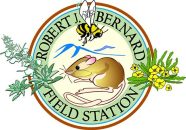Vajda, Nicole Ann (1999)
The relationship of Acorn Woodpecker (Melanerpes formicivorous) Group Size to the Abundance and Distribution of spatially Heterogeneous Habitat Features.
Bachelor of Arts, Scripps College, Biology.
Advisor: Dan Guthrie.
No abstract provided – excerpt from the Introduction
In this study, the relationship of territory site, spatial distribution abundance of resources as mechanisms which regulate group size, were explored by observation and by GIS. My hope was to gain an understanding of the nature of population regulation and its association with spatial relationships of habitat features to acorn woodpecker colonies of varying sizes. My interest lies in understanding how colony size, which reflects reproductive success (Koenig and Mumme, 1987), is influenced by the following habitat features: territory size, food resources, nest and granary sites.
Four hypotheses were tested by this study: (1) there can be expected to be a correlation between group size and territory size, as often territory size increases proportionately to increases in group size (Wesolowski, 1994); (2) the abundance of oak trees whose acorns provide over 50% of the acorn woodpecker’s diet (Koenig and Heck, 1988) will be greater and distributed in closed proximity to the next sites of larger groups, since all group members occasionally wander beyond their normal home range in pursuit of acorns (Koenig et al., 1995), (3) Third, nest-site availability, or availability of the preferred sycamore next sites, will be greater in territories of larger group size. In Hooge’s study on nest-site selection, there was a strong correlation between reproductive success and the availability of preferred nest sites (1999). Therefore, (4) as group size increases, the number of granaries and suitable granary sites within the territory can be expected to increase proportionately, as a link between the two has been identified by Koenig et al. (1987).
